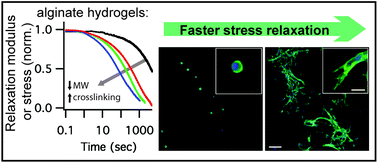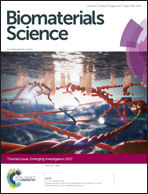Viscoelastic hydrogels for 3D cell culture
Abstract
In tissues, many cells are surrounded by and interact with a three-dimensional soft extracellular matrix (ECM). Both the physical and biochemical properties of the ECM play a major role in regulating cell behaviours. To better understand the impact of ECM properties on cell behaviours, natural and synthetic hydrogels have been developed for use as synthetic ECMs for 3D cell culture. It has long been known that ECM and tissues are viscoelastic, or display a time-dependent response to deformation or mechanical loading, exhibiting stress relaxation and creep. However, only recently have there been efforts made to understand the role of the time-dependent aspects of the ECM mechanics on regulating cell behaviours using hydrogels for 3D culture. Here we review the characterization and molecular basis of hydrogel viscoelasticity and plasticity, and describe newly developed approaches to tuning viscoelasticity in hydrogels for 2D and 3D culture. Then we highlight several recent studies finding a potent impact of hydrogel stress relaxation or creep on cell behaviours such as cell spreading, proliferation, and differentiation of mesenchymal stem cells. The role of time-dependent mechanics on cell biology remains largely unclear, and ripe for further exploration. Further elucidation of this topic may substantially advance our understanding of cell–matrix interactions during development, homeostasis, wound healing, and disease, and guide the design of biomaterials for regenerative medicine.

- This article is part of the themed collection: Emerging Investigators 2017


 Please wait while we load your content...
Please wait while we load your content...